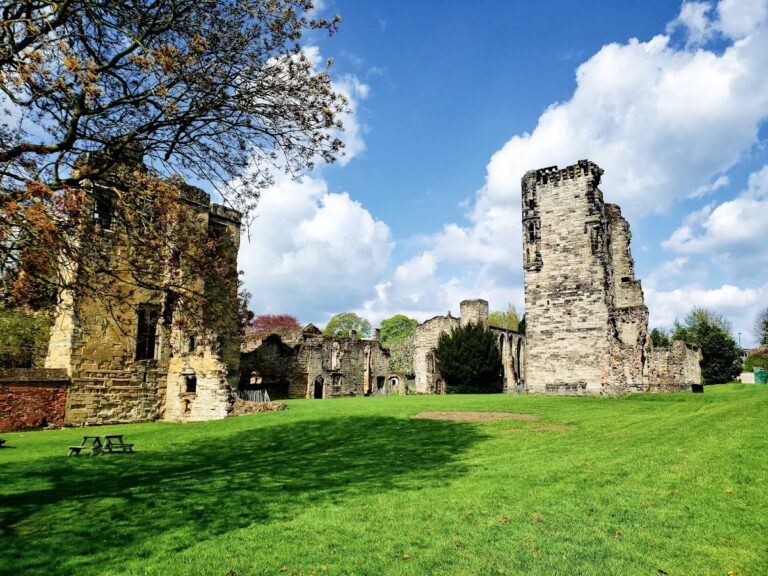Wall Roman Site: A Roman Settlement and Military Post in Staffordshire, England
Visitor Information
Google Rating: 4.5
Popularity: Low
Google Maps: View on Google Maps
Official Website: www.english-heritage.org.uk
Country: United Kingdom
Civilization: Roman
Remains: City
History
The Wall Roman Site, located on Watling Street in Wall, Staffordshire, England, was established by the Romans around 50 CE. It began as a military fortress during the early Roman invasion of Britain. The fortress initially housed the Legio XIV Gemina, a legion involved in campaigns against the Brigantes tribe under the Roman governor Aulus Didius Gallus.
By the late 1st century CE, during the Flavian period, the site transitioned from a military base to a civilian settlement and posting station. It served official travellers at the crossroads of two major Roman roads, Watling Street and Ryknield Street. The original timber fortress was replaced by smaller forts, with the legion relocating to Wroxeter around 58 CE. These forts were built and dismantled in response to military needs, including during the Boudiccan rebellion of AD 60–61 and subsequent campaigns in the 70s CE.
Around 130 CE, Letocetum ceased its military role and became a civilian town within the territory of the Cornovii tribe. New stone buildings, including a mansio (official guesthouse) and a bath-house, were constructed to accommodate travellers and the growing population. The settlement reached its largest size in the 2nd and 3rd centuries, covering between 8 and 12 hectares (20 to 30 acres).
In the late 3rd century, the mansio and bath-house were abandoned, likely due to economic decline. Around 300 CE, a smaller fortified enclosure was built along Watling Street. This enclosure featured thick stone walls, triple ditches, and turf ramparts, probably constructed in response to uprisings by Welsh tribes such as the Ordovices and Silures.
The site declined after the 4th century, with the latest Roman coin found dating to 381 CE. Following the collapse of Roman administration in Britain in the early 5th century, Letocetum was abandoned. The medieval village of Wall later developed on the same location. The site is mentioned in the Roman Antonine Itinerary as Etocetum and may correspond to Cair Luit Coyd, a settlement listed in the 9th-century Historia Brittonum, showing its continued recognition after Roman rule.
Remains
The Wall Roman Site features remains of a Roman settlement. The earliest fortress was timber-built on a hilltop near the present church, later replaced by smaller forts on flatter ground west and north of Watling Street. These forts date from the mid-1st century CE and were linked to military campaigns.
Three successive mansiones (official guesthouses) have been excavated. The first, built between 54 and 60 CE, was timber-framed with wattle and daub walls, some plastered and painted with simple linear designs. It was arranged around a square courtyard about 19 by 19 metres (62 by 62 feet) and had a likely thatched roof destroyed by fire.
The second mansio, also timber-built with plastered walls, featured vivid painted decoration and a large sandstone well measuring 2.29 by 2.44 metres (7.5 by 8 feet) and 6.1 metres (20 feet) deep. This building was dismantled around 140–150 CE.
The third mansio, constructed around 130 CE, was built on a stone base and stood at least two storeys high. It had a colonnaded façade with a tiled roof supported by wooden columns. The central entrance led to a colonnaded atrium or courtyard, possibly open to the sky and containing a garden. Rooms flanked the entrance hall, including washing facilities with drainage and a probable guardroom. Some rooms opening onto the colonnade likely served as private accommodation. The largest chamber in the northeast corner was heated by a hypocaust system, an underfloor heating method added later.
Next to the mansio, separated by a cobbled road 2.4 to 3 metres wide, lay a public bath-house. This complex included an eastern colonnade leading into a large covered courtyard, possibly a basilica. The bath-house contained a stoke-room (praefurnium) with wood-fired furnaces supplying hot air under floors and through wall tiles to heat the tepidarium (warm room), caldarium (hot room), and laconicum (dry sweating room). The walls were built of finely dressed stone about 1.2 metres thick, and the roof was barrel-vaulted with vents for smoke escape.
The mansio and bath-house were abandoned in the late 3rd century after destruction by fire. These buildings were excluded from the late Roman defensive enclosure built around 300 CE. This enclosure featured a stone wall approximately 2.7 metres thick, triple ditches, and turf ramparts, enclosing 2.1 hectares (5.2 acres).
Archaeological finds include Roman burials along Watling Street with 1st and 2nd-century pottery. Near the modern church, a large earthenware vessel resembling the goddess Minerva suggests a temple site. A rectangular crop-mark northwest of the bath-house may indicate another temple.
Nine carved pre-Roman cult stones were discovered reused in the mansio walls, dating to the 170s CE. These stones depict horned warriors, Celtic heads, and local deities and likely came from a 1st-century Celtic shrine demolished in the mid-2nd century.
Artifacts displayed in the site museum include jewelry, ceramics, a Roman milestone fragment, a lead figurine of an African warrior, painted wall plaster, and numerous querns used for grinding grain. The museum is housed in a 19th-century agricultural building near the excavation area.










